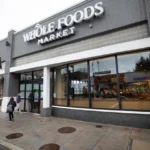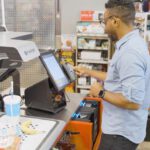They say you eat with your eyes first. The same can be said of in-store experiences for consumers.
DGS Retail’s recent acquisition of SMS Display Group and its rebranding to Agility Retail Group signals a larger trend in the retail industry: the growing emphasis on enhancing in-store customer experiences. By merging visual merchandising expertise with a focus on solutions for in-store design, Agility Retail Group aims to address the changing demands of brick-and-mortar retailers by listening to customers, identifying their pain points and providing solutions.
“We’re not widget salespeople,” Agility Retail Group CEO Peter Stevens told PYMNTS CEO Karen Webster. “That’s not what we’re here to do. We’re solution providers and we try to build partnerships with our customers, our retail partners, and understand what their problems are and get involved with their design so that we could be part of the development of these things. Listen to what their problems are. It’s all about partnering with the retailer and how much they’re willing to partner with you.”
Collaboration is Key
This commitment to collaboration is evident in the long-term relationships Agility cultivates with clients. For instance, when working with the TJX Companies on new store designs, Agility plays an integral role in the process, engaging in the development of multiple prototypes to ensure that the final product meets both the retailer’s vision and customer needs.
“You build these long-term partnerships and we work with TJX companies and when they’re developing new store looks, we’re in there and they’ll do three, four, five different prototypes of a store,” Stevens said. “Everybody will walk through and they’ll say ‘we like this. Not that, not this, not that.’ And then we go back and do prototypes in our shop where we’ll set up faux shopping areas. That’s becoming the thing and you just work with them. It’s iterative, it’s listening, it’s understanding, it’s partnering.”
By listening closely, Stevens and his colleagues can identify solutions based on their collective experience. It’s not about copying other retailers, Stevens noted, but rather gaining insights from experience and understanding their specific challenges.
“Rather than imitating what others have done, I focus on how I can assist them in addressing their unique issues,” Stevens said. “That’s the essence of our partnership.”
Balancing Preferences
This mindset aligns with how retailers are now prioritizing efficient navigation and accessibility in their stores, Stevens said. They’re responding to customer preferences while still aiming to drive sales. For instance, placing essential items like milk at the back of grocery stores is a deliberate strategy designed to encourage shoppers to wander through aisles filled with other products. This tactic not only boosts spontaneous buying but also enhances the overall shopping experience.
Another notable trend is the implementation of the single queue system at checkout. This approach aims to reduce wait times while simultaneously promoting impulse purchases as customers are exposed to additional products while waiting. However, Stevens noted that finding the right balance between speedy service and encouraging customer exploration is a delicate task.
“We do want to draw you in for the experience to try to expand your time you spend with us and potentially the spend you make with us,” he explained. “It’s that balancing act of store layout, store fixturing, store design, and how you do things. The single queue is actually quicker. There’s nothing worse than being in a grocery store line and being like, ‘is that line going faster than this line?’”
Self-Service or Personalized Checkout
The self-checkout phenomenon has garnered mixed reviews, Stevens noted, prompting some retailers to scale back on self-service stations. Innovations such as mobile checkout are being tested, yet there’s still no consensus on the future of self-checkout technology. The “just walk out” concept popularized by Amazon has faced challenges, with many consumers expressing anxiety over its use. As Stevens noted, understanding what consumers want from their checkout experience — whether it’s speed, convenience, or personalized service — remains a critical question.
This reflects an ongoing debate about the balance between self-service and personalized service. “There’s definitely a battle going on there now in the grocery space,” Stevens explained, underscoring the need for retailers to adapt to shifting consumer preferences.
As consumer behavior evolves, Zillennials — those straddling the line between Millennials and Gen Z — play a significant role. As highlighted in the PYMNTS Intelligence report, Generation Zillennial: The Future Is Click-and-Mortar, these consumers are adept omnichannel shoppers. Three-quarters of Zillennials have made purchases both online and in-store in the past month, a behavior that significantly impacts how retailers approach their offerings. While Millennials tend to favor in-store shopping less, and Gen Z consumers lean toward online purchases, Zillennials exhibit a unique blend, preferring in-person shopping for groceries and online channels for travel and transportation.
This change in shopping habits has led stores to rethink their layouts. Stores are pivoting their focus from center aisles to the more profitable outer rings, Stevens explained.
“You are seeing a trend,” he added. “The center of the store is shrinking a little bit. And you know because it’s the outer ring. The outer ring is where they make their money and, to be honest with you, it’s where I make my money as well because that’s where they’re going to pay and invest. The way you display your produce, your floral, your bakery items, your pre-made foods and things of that nature opening up, it’s interesting.”
Are these news store formats performing well with consumers?
“Very well,” Stevens said. “The feedback loop has been very good, which is good for our business as well, because they’re spending more with us to make their stores a better place to shop. The results are showing and, therefore, they’re going to go back and continue to do that with us. That’s an element of our business.”
Looking ahead, Stevens noted, the retail landscape is marked by uncertainty.
Retailers are assessing past investments and adapting to changing consumer spending habits, Stevens said, adding, “retailers need to make it more compelling for you to go into their physical stores. We can get the same goods typing it online for most retailers, but people like the environment. They want to enjoy the process of shopping.”






